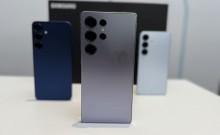If any company were in a prime position to bring virtual reality to the masses, its Sony. They have an audience of some fifty million PS4 owners worldwide to pitch to a headset thats well positioned between high end VR headsets and mobile phone-using headsets like the Samsung Gear VR.
Whether mainstream audiences are ready for virtual reality, or indeed if virtual reality is ready for them, has been the big question of 2016. The Valve-developed HTC Vive and Oculus Rift both released on PC earlier this year, but neither made much of an impact in part down to the high prices of both units.
With most of the processing power handled by the PS4 (with support from an additional processing unit), the price of PlayStation VR has been kept down to £350, plus an additional £40 for the PlayStation Camera if you dont already own one and £30 per PlayStation Move controller – which only some games utilise.
Undoubtedly its still pricey, but of all the available headsets PSVR does strike the best balance between performance and affordability. Despite a sizeable price difference between it and the Vive and Oculus, PSVR is capable of competing visuals, rendering at a 1920x1080 resolution (split between the two eyes) versus the other headsets 2160x1200 resolution.
Where Sony partly makes up for this is in the PSVRs refresh rate, which is higher than its competitors at 120hz. This lessens the screen door effect (seeing the lines between pixels), making text easy to read and making the VR experience smooth even when players move their heads quickly.
Setting everything up appears trickier than it is at the start. Theres a mess of cables, but this is easier than the HTC Vive and comparable to the Oculus. Everything must run through the processing unit, which means six cables are eventually running out of it to your television, the PS4, and the headset itself.
Theres also the PlayStation Camera, and each motion controller has a charger. With the processing unit using up one of the PS4s two USB ports, use of the other becomes a juggling act between the Move controllers, and any DualShock controllers youre using. There is a docking/charging station that eases this, but we havent tested it out.
The requirements of virtual reality mean theres a clear downgrade in visuals compared to modern, standard games. While there are good character models in games like VR Worlds London Heist and many games make the most of the limitations, there will be times when the drop in visuals is stark.
The PS4 Pro might offer improvements to the PlayStation VRs visual capabilities, but if it does, Sony is keeping the truth close to their chest. For now at least.
PSVRs motion tracking capabilities are good but this is far from the room-scale, industry-best tracking of the HTC Vive. Sony must have been delighted when they found a use for the camera and Move controllers few bought before, but the dated technology can feel like exactly that. In titles like Job Simulator the motion tracking paled in comparison to the same game on Vive.
The area of play is smaller and we found that the camera had difficulty tracking controllers (it tracks the light sources on the Move and DualShock 4) in inconsistent lighting. So be prepared to draw the curtains or pull the blinds. It also doesnt feel quite capable of the delicate movement required of some games.
The headset itself however is fantastically designed. While a little heavier than its competitors, it is far and away the most comfortable of the three premium headsets. The Vive and Oculus feel strapped on, whereas PlayStation VR is partly head-mounted, with the weight of the device distributed across the hairline, the top of the head and around the crown.
In terms of launch games, PSVR certainly has a lot to offer. Well have individual reviews of these at the foot of this review, with more to be added in due course. Both first and third party games among them are well made and handle VR well, which is the absolute minimum requirement. Some titles, such as Driveclub VR and the undemanding PlayStation VR Worlds are the obvious entry points for newcomers, while other more intricate titles such as Tumble VR and Job Simulator require a little more of players.
PlayStation VR is a great piece of quality hardware supported by a strong line-up of launch games that showcase the potential of virtual reality. Sonys headset is cheaper than the HTC Vive and Oculus, but its quality is far greater than the disparity in price might suggest. The foundation is there for developers to do great things, but only a consistent release schedule of quality titles over the next year will help make PSVR a success.
The drop in visual quality brought on by the necessities of VR is noticeable, and will make it a tougher sell to mainstream audiences also being told that 4K gaming is the new frontier. Great games have been made despite limitations before however, and virtual reality offers enough to make that entirely possible in the PSVRs future.
PlayStation VR launch game reviews:














